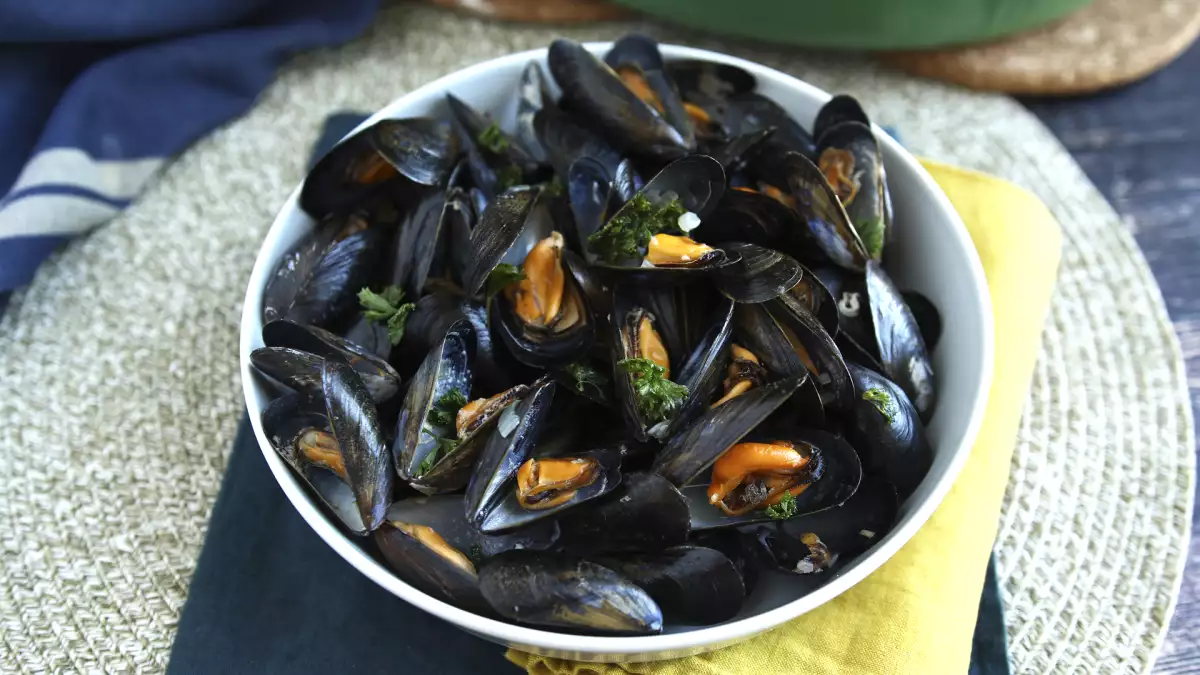Master mussel prep: 3 steps to clean them like a chef

They’re quick to cook, full of flavor, and instantly elevate any meal—from beachy appetizers to elegant main courses. But before mussels hit the pan, there's one part that often feels more daunting than delicious: cleaning them. What’s that fuzzy thread? Is that shell supposed to be open? And do you really need a brush?
If you’ve ever stared down a net of mussels wondering where to begin, you’re not alone. But good news: cleaning them isn’t hard—when you know the right order. With cold water, three straightforward steps, and a bit of method, you’ll have spotless mussels in no time. Here’s how to go from murky to meal-ready with confidence.
Step 1: Review before you rinse
Before diving into scrubbing and pulling, start with a simple inspection. Mussels from the market—usually farmed and grit-free—should still be soaked briefly in cold water. This quick bath isn’t for purging (like with clams), but for refreshing them and giving you a moment to sort through your batch.
Use this 10–15 minute window to spot the duds: discard any mussels with cracked shells or ones that remain open even after a gentle tap. If a shell doesn’t close, it means the mussel is dead and not safe to eat. This initial scan acts as your personal quality control checkpoint—and makes sure only the freshest mussels end up in your dish.
Step 2: Give them a good brush
Even though you won’t eat the shells, cleaning them properly is key—especially if you’re using the cooking liquid later. Under cold running water, scrub each mussel with a stiff-bristled brush to remove any slime, bits of algae, or debris clinging to the surface.
You don’t need perfection—just a good clean to avoid unwanted grit or murk in your pot. Once a mussel is brushed, place it in a new bowl to keep it separate from the ones still waiting their turn. It’s a small step that makes a big difference in flavor and presentation.
Step 3: Remove the beard (the right way)
That tough little thread poking out from the shell’s seam? That’s the beard, or byssus, which mussels use to anchor themselves underwater. It’s harmless, but chewy—and best removed before cooking.
To do it right, hold the mussel firmly and pull the beard toward the pointed end of the shell. Avoid tugging outward, as that can tear the mussel’s meat. For stubborn ones, use tweezers or a blunt knife. Don’t worry about getting every last strand—just the most visible ones that could affect texture.
Time to Cook!
Cleaning mussels isn’t nearly as intimidating as it seems. With cold water, a little order, and this three-step method, it’ll quickly become just another part of your kitchen rhythm—far less dramatic than childhood memories of steel wool and boiling water.
And once they’re prepped? The possibilities are endless. Try them steamed with bay leaf and lemon, simmered in garlic and white wine, tossed into a seafood stew, or dressed in coconut milk and lime for a Thai-inspired twist. Whatever the flavor, now you’re ready to cook them right—clean, fresh, and fabulous.
 Patricia González
Patricia González
Comments